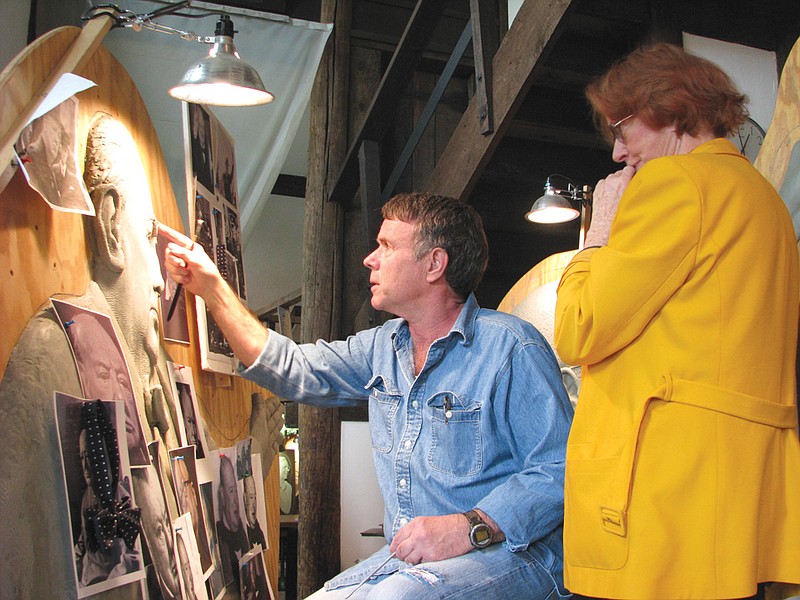"A shadow has fallen upon the scenes so lately lighted by the Allied victory. ... From Stettin in the Baltic to Trieste in the Adriatic, an iron curtain has descended across the Continent."
Winston Churchill's "Sinews of Peace" speech, delivered at Westminster College in 1946, is arguably - in the United States at least - the British statesman's most famous; the invoked image of an iron curtain the most memorable.
St. Louis artist Don Wiegand now seeks to capture that moment in his new "Iron Curtain" sculpture, commissioned by Richard Mahoney - a longtime member of the Board of Governors of the National Churchill Museum. The piece, a bas relief which depicts Churchill as he utters that famous phrase, will be dedicated during a special ceremony starting at 11 a.m. on Friday, May 13, which will include an appearance by Churchill's granddaughter, Edwina Sandys.
"We were looking for ways to enhance the entryway to the museum," said Rob Havers, executive director of the museum of the reasoning behind the idea for the sculpture. "That's the iconic line, and there are hundreds of sculptures of Churchill, but nobody had endeavored to depict that moment."
Wiegand, who has created bas relief pieces memorializing Bob Hope and Charles A. Lindbergh and has work in The Vatican and at the Smithsonian Museum in Washington, D.C., said "Iron Curtain" is a "very complex composition."
"It's a cutaway, and it will all be floating off of a column I've designed," Wiegand said. "It's contemporary and figurative both, and historical."
The relief will depict Churchill standing at the podium at Westminster, arm raised, with several microphones in front of him and the climbing vine that was growing on the podium.
"Mr. Mahoney picked the moment when Churchill raised his arm and dropped it and said, "An iron curtain has descended,'" Wiegand said. "I had to use a compilation of a lot of photos (to capture the image), Edwina Sandys has been helping a lot.
"I'm proud of it. I think it's going to be a powerful piece," he continued. "It's capturing a moment that is showing and warning the world about freedom being taken away, and that's timeless."
Wiegand said the 300 leaves attached to the podium "are symbolic of all of humanity."
The artist has completed a rough model of "Iron Curtain" but has not finished the sculpture itself because of issues with the initial casting of the bronze.
"I'll be working on it right up to the end. I won't see the finished piece until that morning myself," Wiegand said. "Everybody's going to see it right along with me, and that's pretty fun."
Havers said he is looking forward to having the piece installed to help draw visitors in to the museum.
"I think it's going to be a magnificent enhancement," Havers said. "It will be a visible cue - the way it is to be positioned, Churchill is almost gesturing to the museum."

